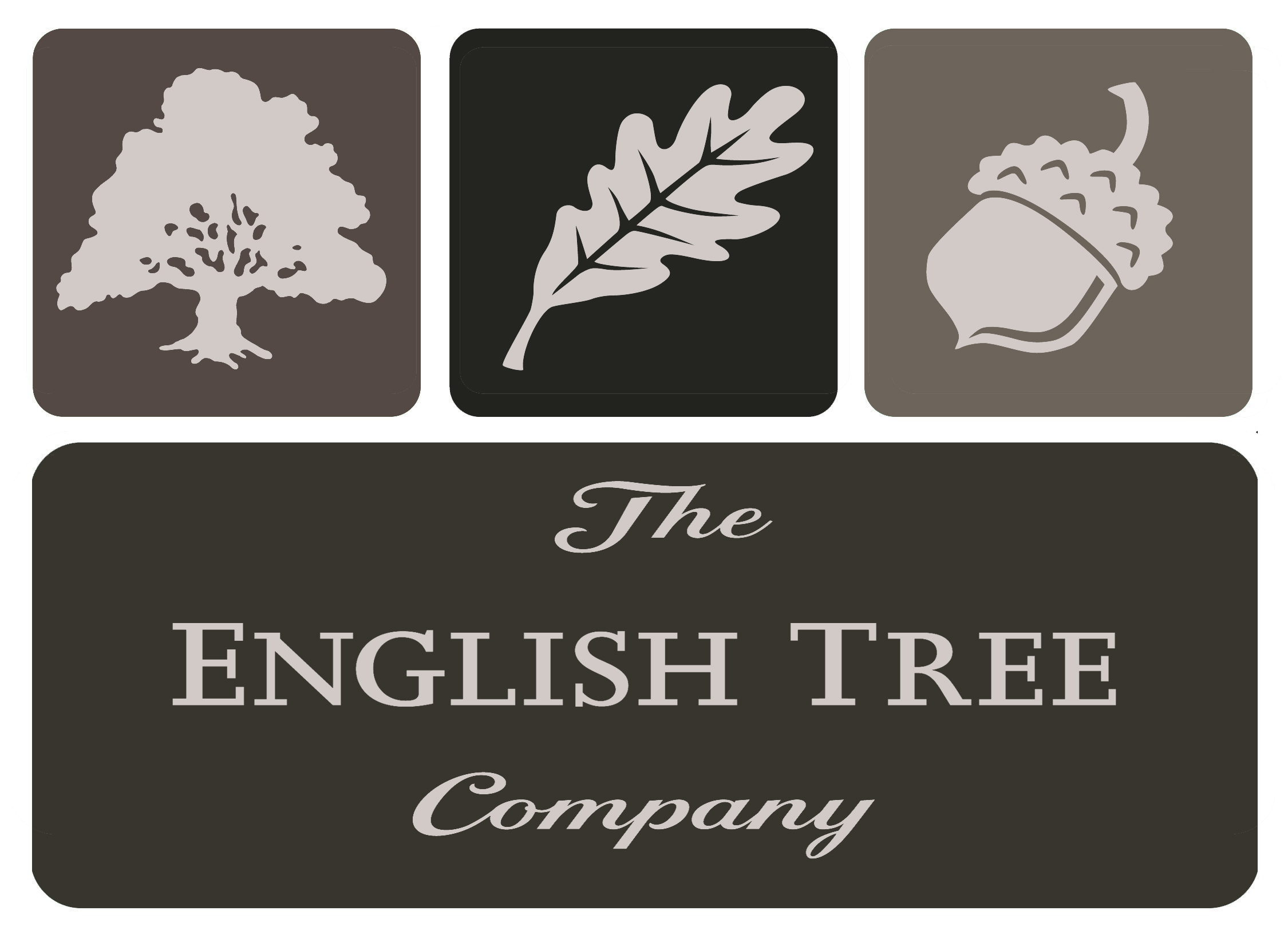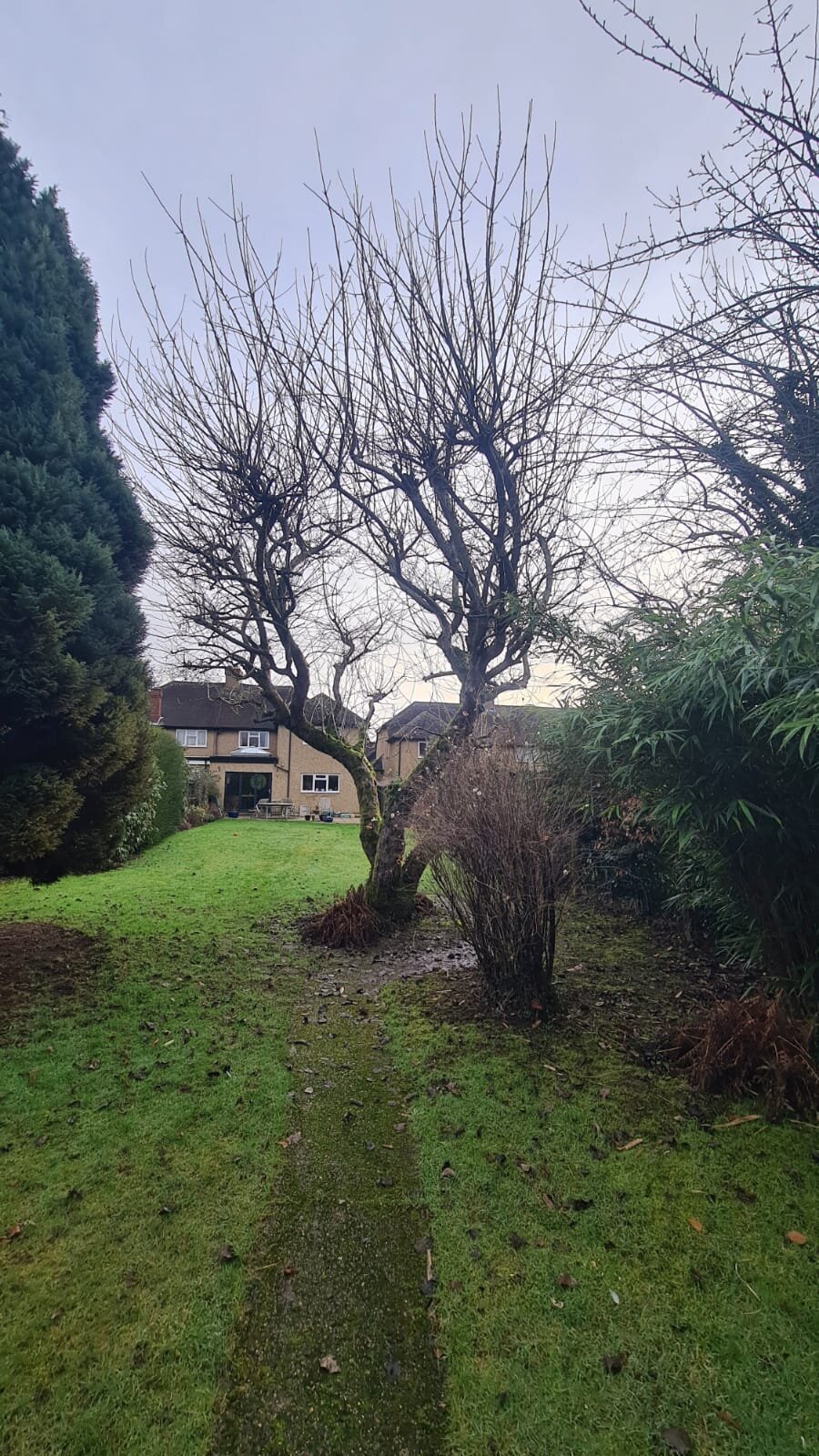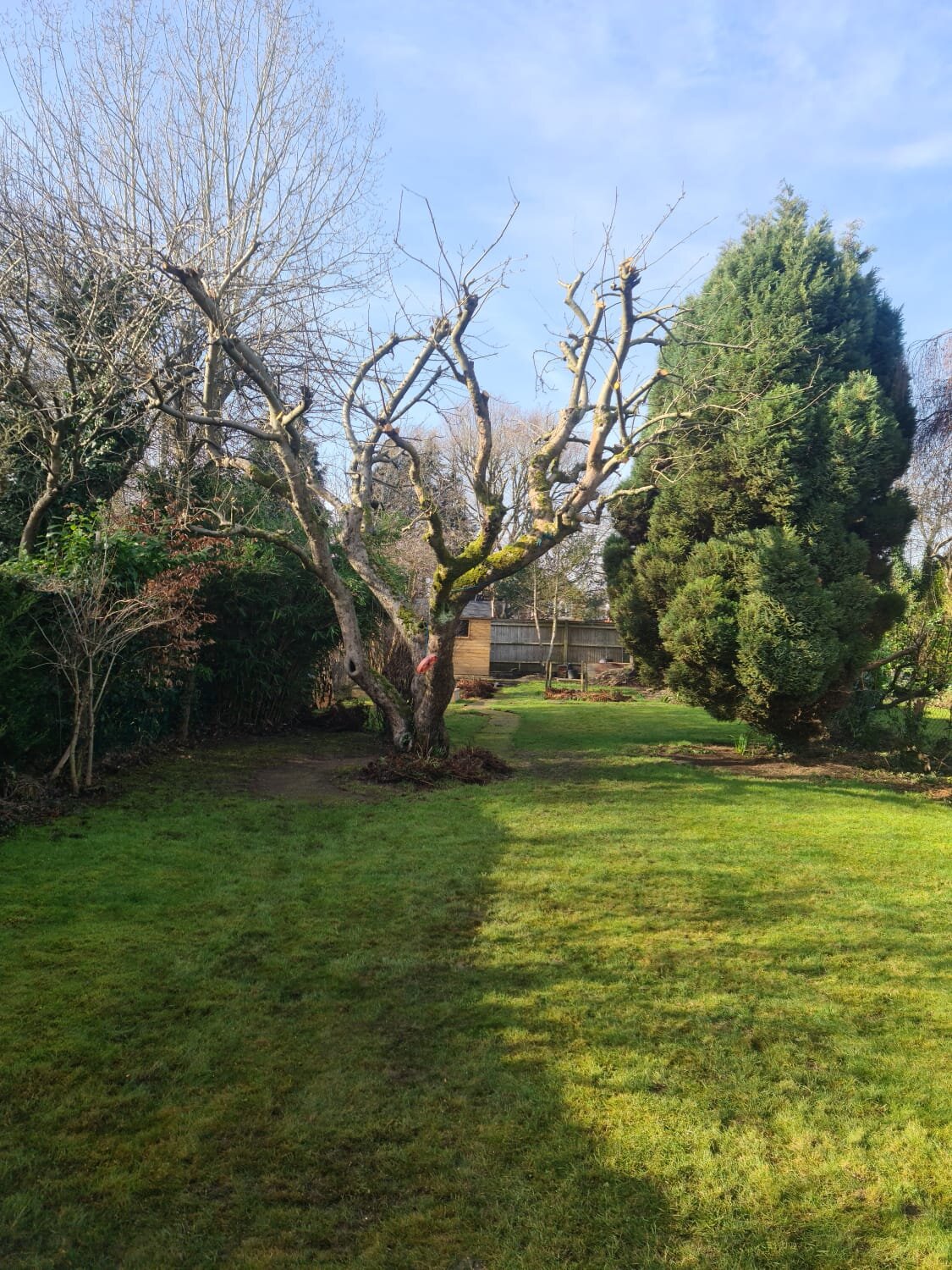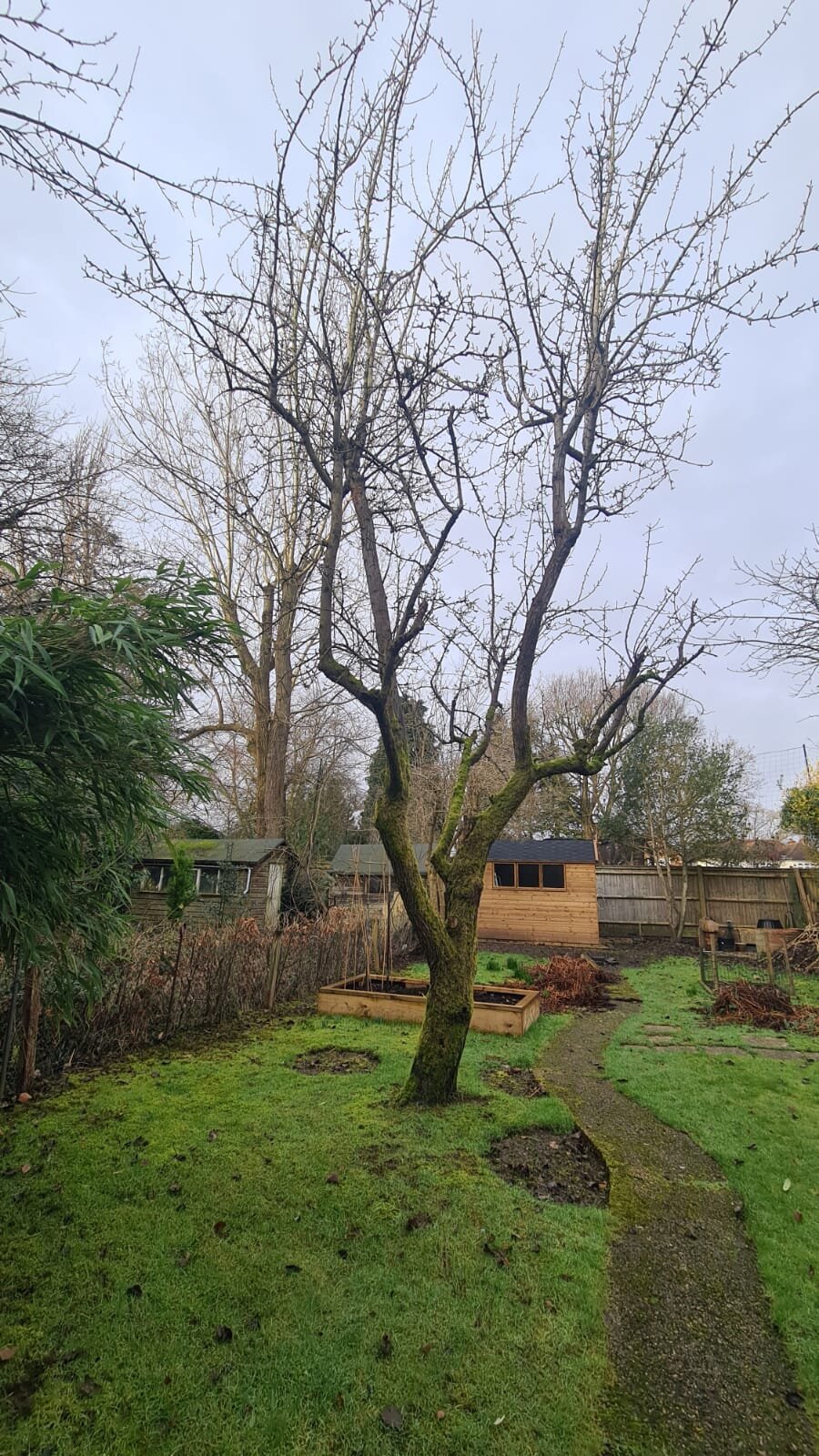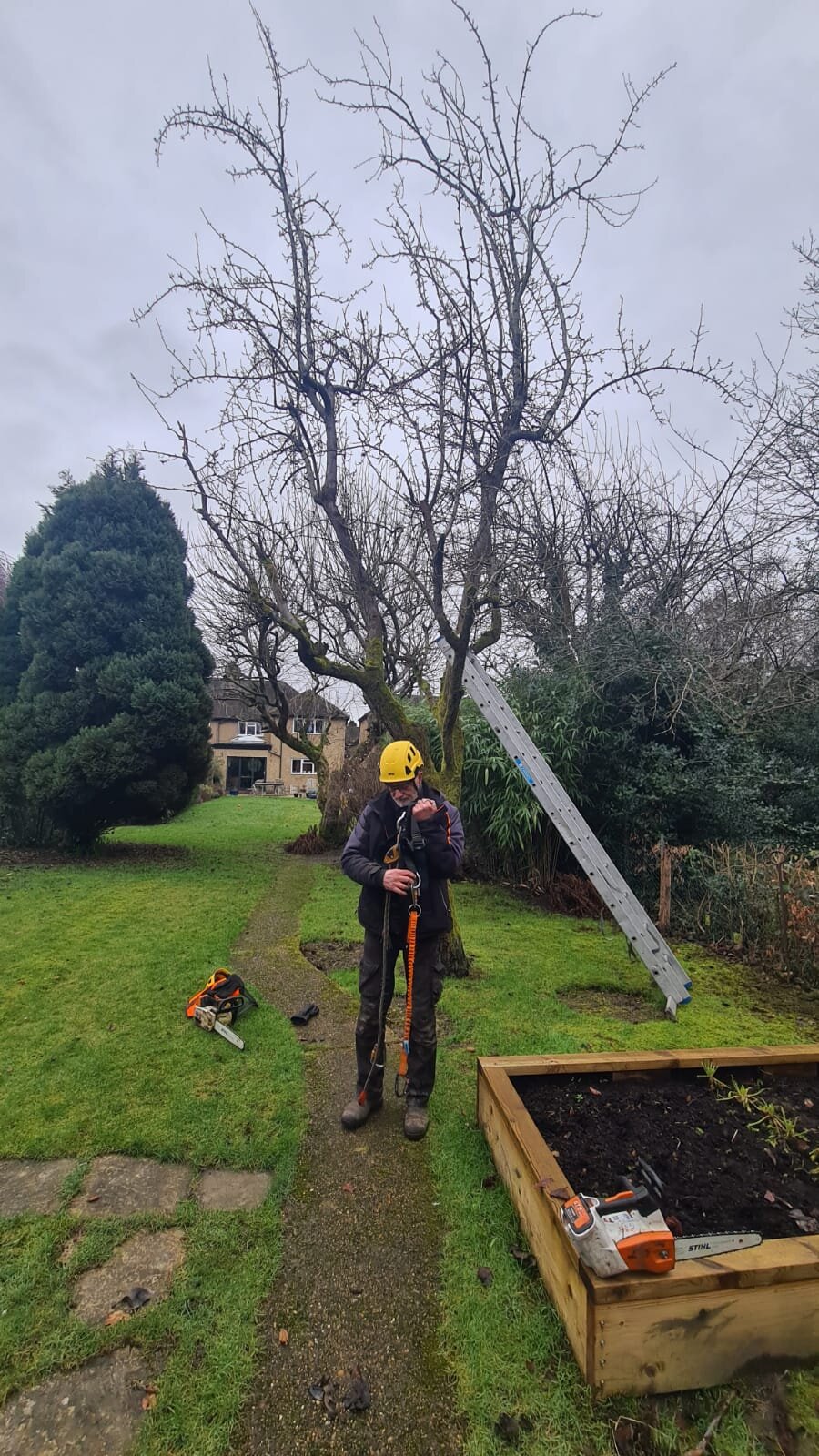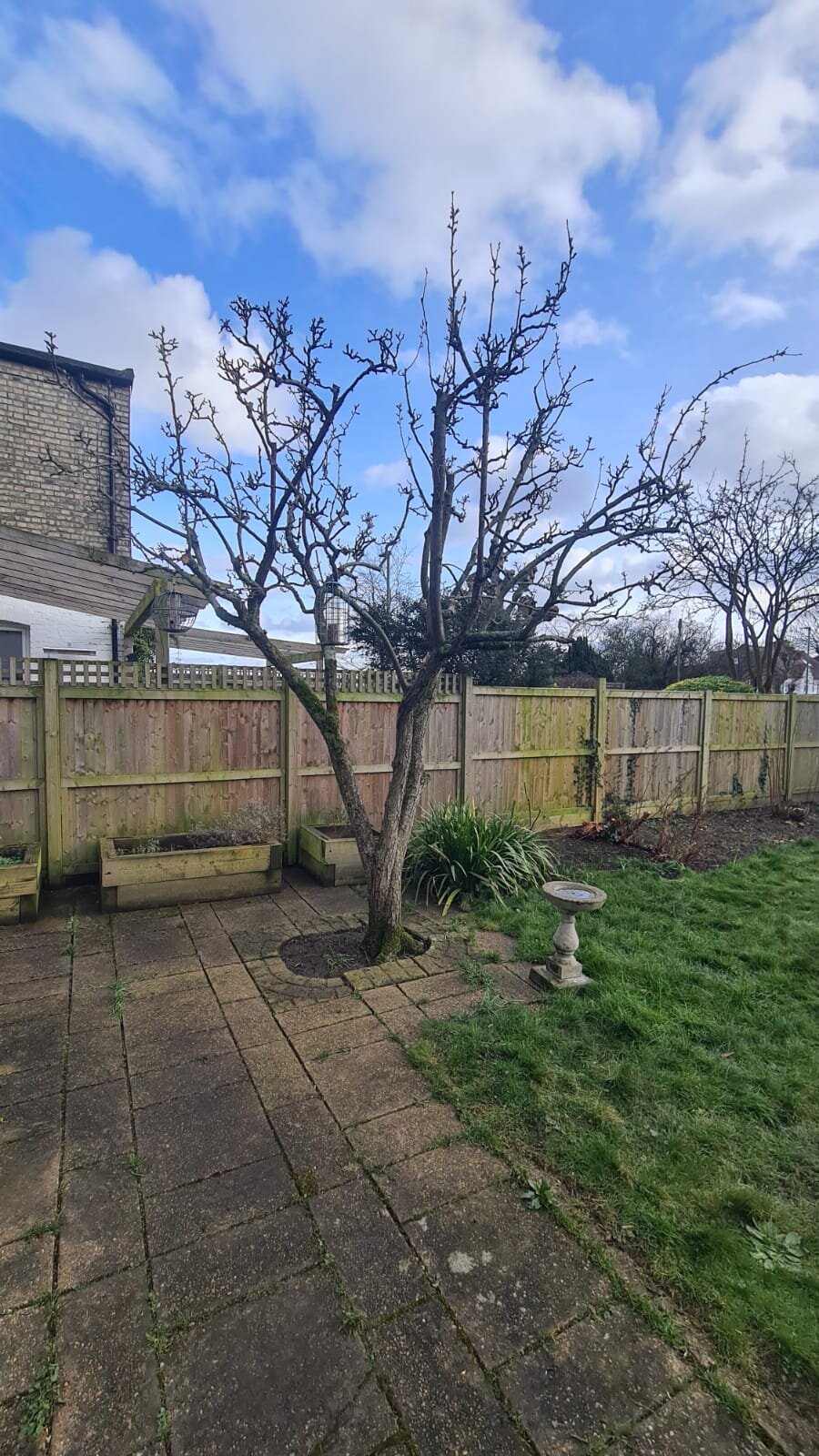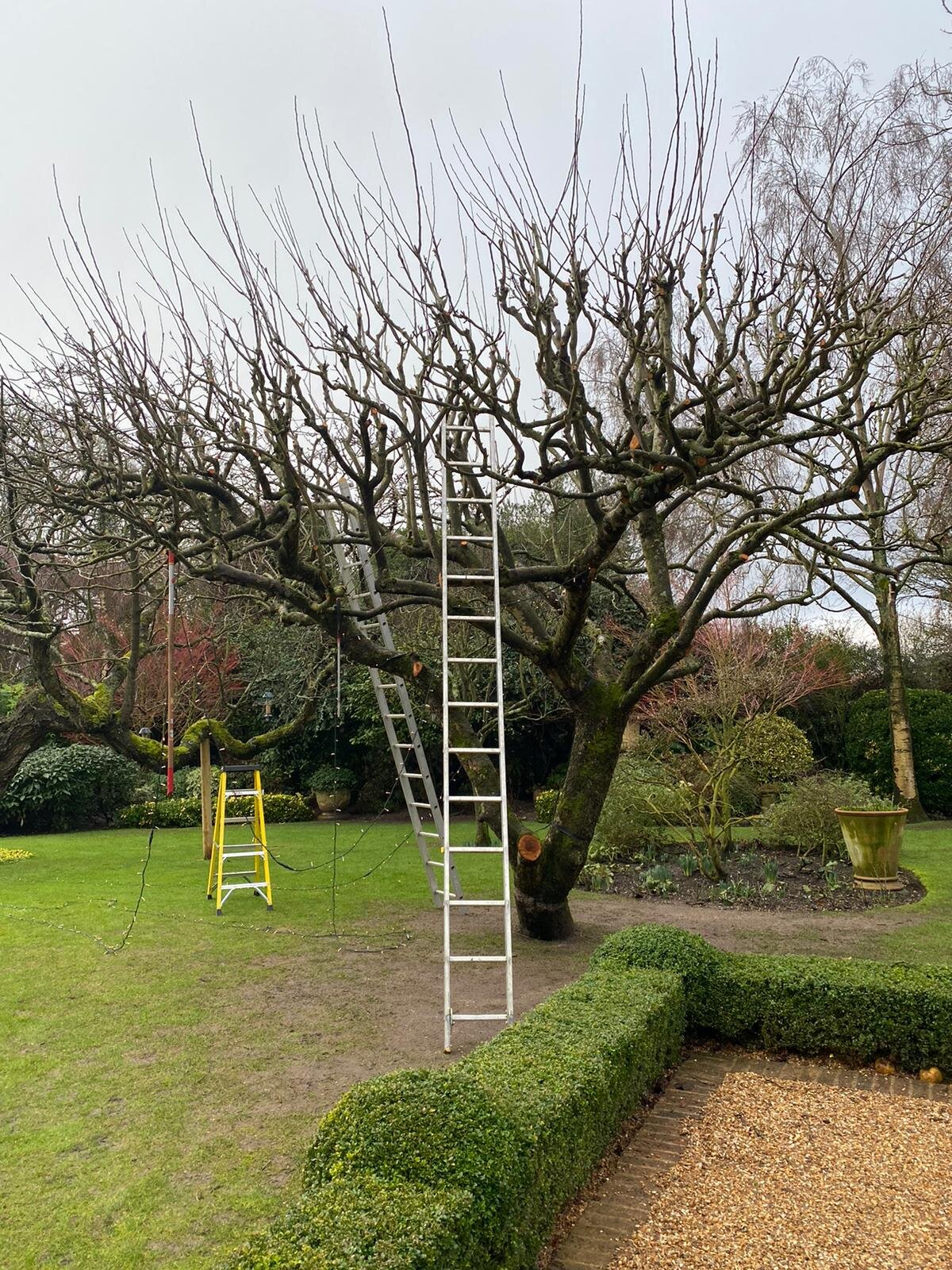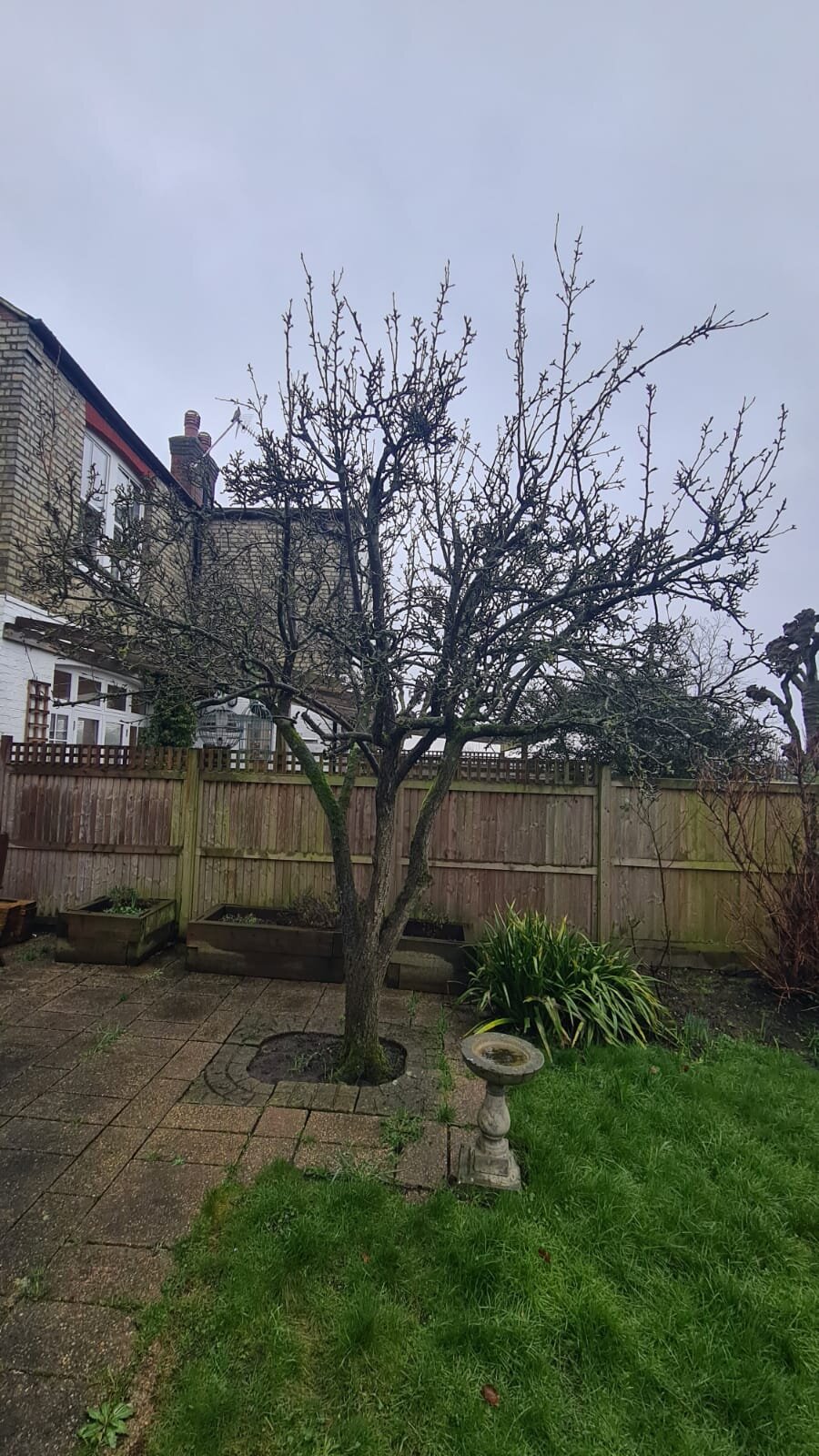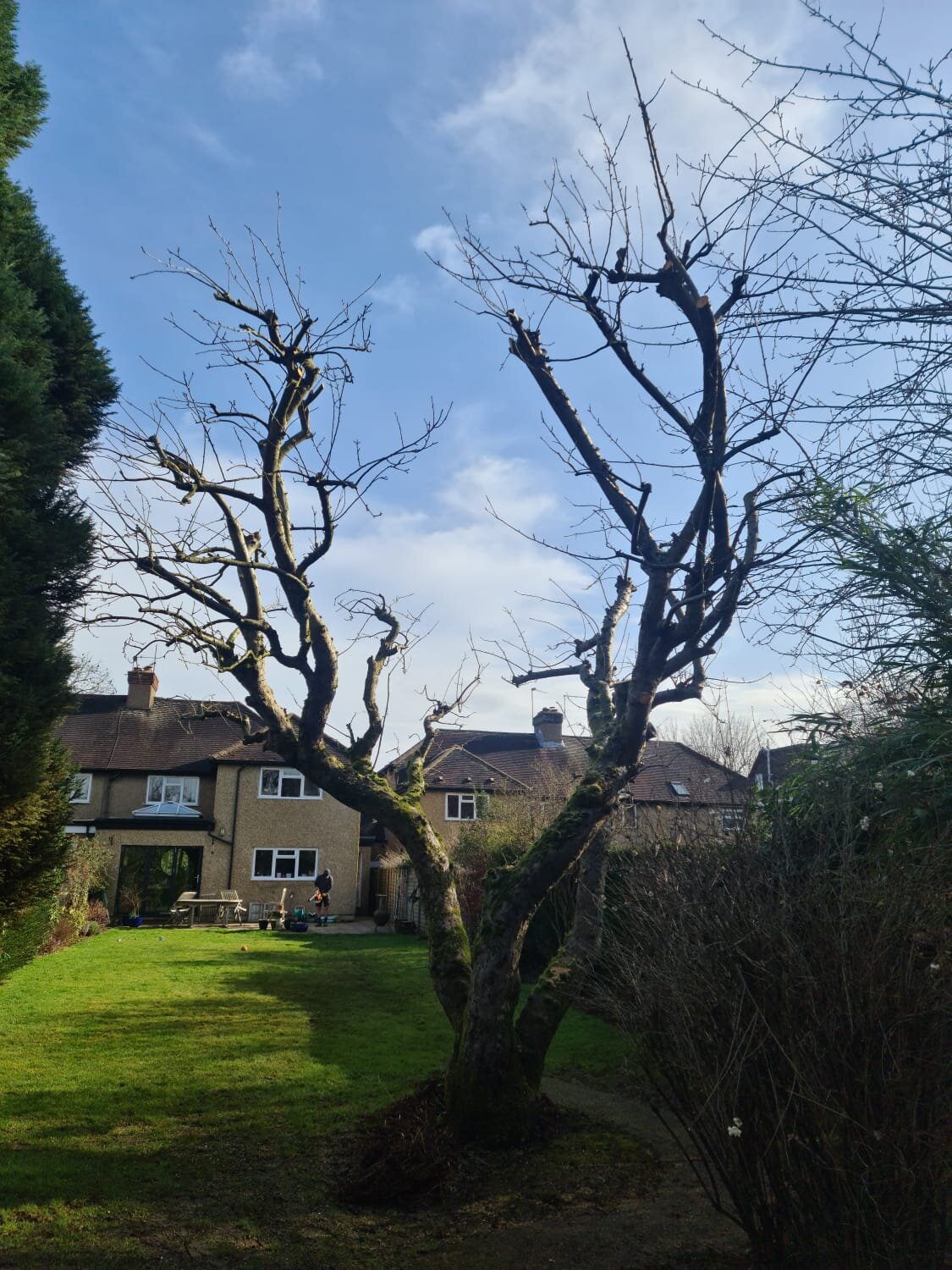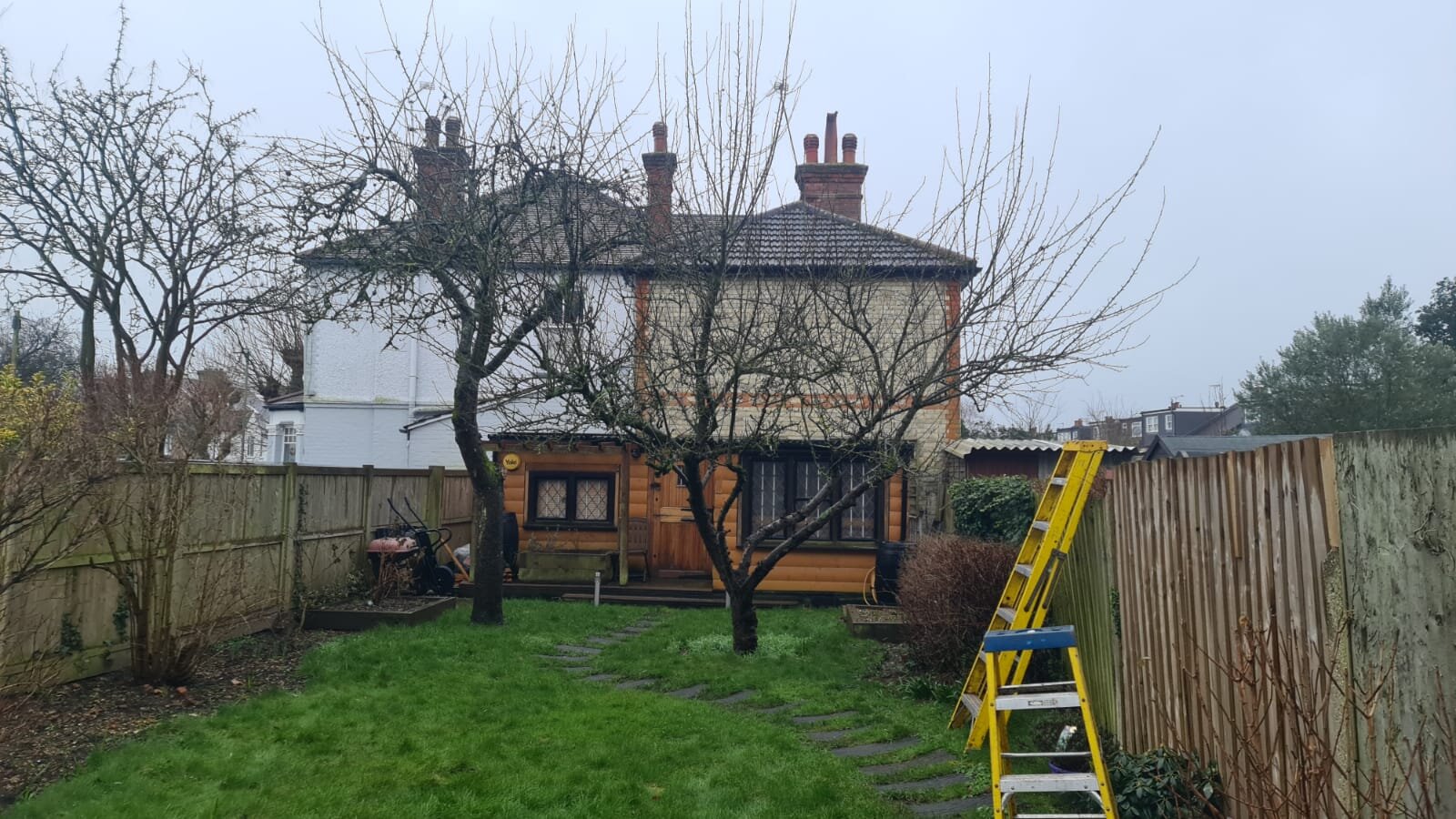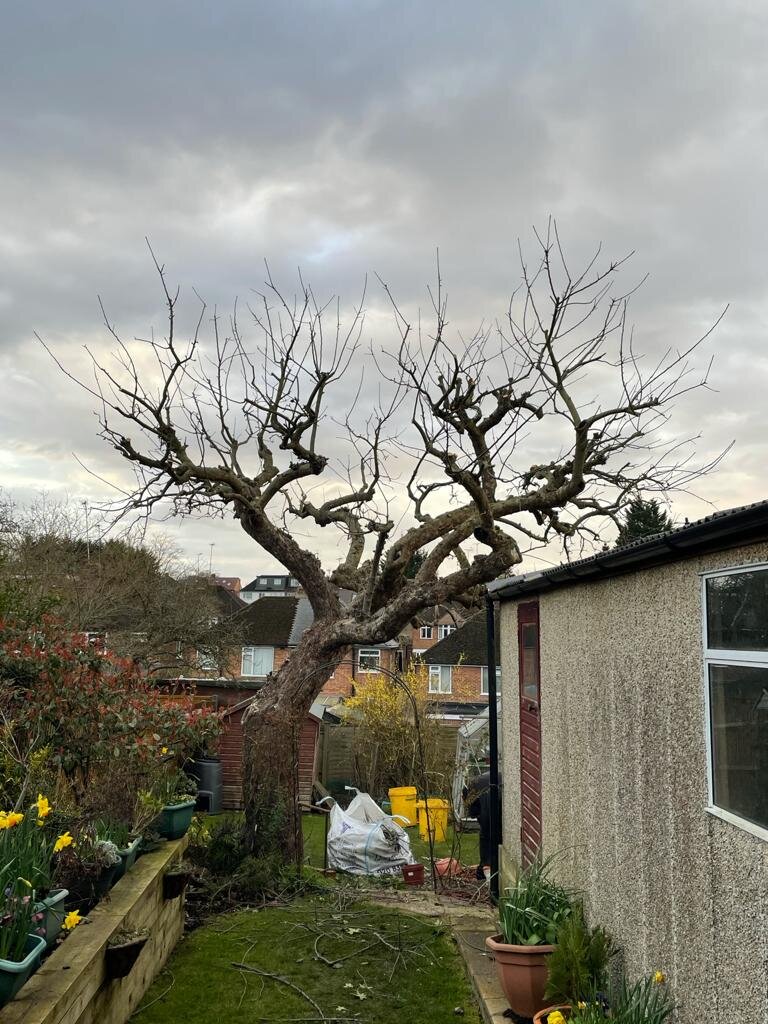Our Services
Tree Surgery
Crown / Canopy reduction / Pruning
A recommended % of the crown/canopy is removed by evenly pruning the branches to side shoots, to achieve an overall reduction in the height and spread of the tree canopy, leaving a smooth uniform outline. This surgery removes excessive growth, reduces wind resistance and water uptake, reduces shade and trespass, and results in a more balanced, safer, dense crown, which produces a much stronger tree, suited to its position. Once a reduction has been performed, this will need repeating every 3 to 5 years, depending on the species, to ensure the canopy remains safe and the tree remains within its growing position.
CANOPY THINNING
Primarily used on hardwood trees, although it is also appropriate for some Cedars, Pines, etc. Crown thinning is the selective pruning of branches throughout the canopy, usually removing 20-30% of both small and large limbs, leaving only clean healthy growth with a sound structural shape.
This method of pruning improves the structure, encourages the formation of balanced clean new growth, reduces water uptake, discourages disease, increases light penetration and airflow, reducing the likelihood of windblown damage, all resulting in a healthier tree, casting less shade. A crown-thinned tree is aesthetically far more desirable than crown reduction, and does not result in the usual re-growth problems associated with hard pruning.
Increased light falling through the canopy will benefit the gardens/lawns below, and increase light to any buildings close by; an added bonus is less leaves to rake up.
CANOPY RAISING
Selected lower branches and limbs are removed up to a specified height, raising the overall uniform height of the canopy to allow pedestrian/vehicular access underneath. This process creates better visibility/access in public areas, and also allows increased light to penetrate through to the gardens/lawns beneath.
Any tree trespass growing over the public highway is the responsibility of the tree owner. This process is ideal for removing lower limbs causing trespass without compromising the tree’s shape and appearance, thus preventing complaints of obstruction.
If tree trespass causes a public nuisance, the Local Authority may initially submit an instruction to the owner, and in the case of non-compliance, they will often action a severe and unaesthetic lopping back to the boundary line; most will charge a penalty fee for this.
DEADWOODING
This process involves the removal of all damaged, weak, dead, epicormic, crossing and diseased branches within the tree’s canopy, back to live and healthy wood.
Removal of diseased wood into healthy wood, prevents the spread of disease to live wood, removes unnecessary weight and unsightly snags, improves the overall balance of the tree, and reduces any danger from falling limbs. This process is carried out as a matter of course during all tree surgery procedures, and unless no other works are required on particular trees, will be performed without charge under good practice.
POLLARDING
This method of reduction is used to control the height of the tree in order to severely reduce its spread and subsequent water uptake. This involves a regular hard pruning of the branches back to the same pruning spurs on the trunk, allowing new uniform growth.
The pollarding process usually begins at an early stage in a tree’s life and cannot be used on most mature trees that have not previously been pollarded, as this would cause irreparable damage to the structure and systems of the tree.
Particular species, such as Willow, Cornus, Hazel and Lime, react well to this type of pruning, which is similar to coppicing, but at a higher level.
Once a tree has been pollarded it is essential this exercise is repeated regularly every few years, as the old pruning spurs may form a weak point if heavy, new limbs are allowed to grow unrestricted, from these points.
COPPICING
Coppicing has been practised in British woodlands for centuries. Trees are cut down to near ground level, and the stumps (known as stools) are allowed to regenerate for a period of several years to enable the resulting new growth to be harvested. This re-growth is usually very rapid, and the stools produce multiple shoots which are long straight and pliable, as opposed to a single stem and have many garden / craft uses.
Coppicing is highly effective as a method of obtaining wood for a variety of uses, such as pea and bean sticks etc, and many species of tree are suitable for these purposes, including, Hazel, Maple, Hornbeam, Lime and Ash.
Coppiced woods are often divided into sections called coupes, and trees in these coupes are cut on a rotational basis according to the species of tree and the type of harvest required.
Coppicing is also practised on large deciduous shrubs, such as Cornus and Salix, in order to produce brightly coloured new stems to brighten the following winter.
Hedging
Hedges form the structure and screens for most gardens, often like the frame around a painting, which is perhaps a good comparison. Untidy hedges indicate neglect, and they detract from the entire garden’s appearance.
Most species of mature hedging require regular trimming to keep them to their optimum size and shape as, once overgrown, they can become unwieldy and overwhelm the surrounding planting, adding a ragged, unkempt appearance to the garden. This can easily be avoided at minimal expense if carried out on a regular basis.
It is particularly important to carefully prune newly-planted hedging in order to promote a good rate of dense growth at ground level, which will form the hedge’s structure and shape, as well as provide security for many years to come. Hedges should never have vertical sides.
With a few exceptions, neglected, overgrown hedges can be fully renovated and returned to their original size and shape. Thin, sparse hedges with gaps can be made into a solid barrier by laying or infill planting.
TOPIARY
Topiary is only topiary if regularly pruned to keep the shape. Some species need more attention than others depending on growth rates, but in general the species chosen for topiary are fast growers, and therefore need regular expert attention if they are to remain a focal point and provide structure to the garden.
Cabling, Bracing and Bolting:
Older mature trees with large, heavy limbs that are integral to the structure of the tree, particularly those with a bulky crown structure, or growing at severe angles, can be prone to severe stress.
This specialised work, when carried out correctly, can extend the safe life of a tree for many more years. In many cases, previously split or weak limbs can be made structurally secure, and will often repair themselves if caught at an early stage.
Felling
This process involves the sectional removal of all branches and the trunk down to as near ground level as required. For larger trees, or those with obstacles within the felling area, this may entail lowering lopped limbs with the use of ropes to prevent damage to surrounding plants, trees or buildings, as well as for Health & Safety reasons.
Mature trees, that have a substantial water uptake and are close to a building, may be felled over a period of two to three years to avoid any ground movement (heave): this is detailed on our quotations. If there is any doubt we prefer to play safe and carry out a structural arboricultural survey first.
Please see our section under stump removal.
Stump Grinding
After felling, particularly in residential settings or when replanting is intended or stipulated by a designer or Local Authority, it is usual to mechanically grind out the stump. This process requires specialist machinery but is relatively straightforward with skilled operatives.
The stump is ground down to 15 - 25 cm below ground level, and the resulting debris is used to backfill the cavity. Any excess is used as an effective garden mulch or can be removed from site.
It is generally recommended that stumps are removed as they often become a host for Honey Fungus that can desecrate many gardens and plants.
The ENGLISH TREE Company Ltd has a range of equipment to suit all access requirements.
Planting/Transplanting
We can plant any tree of any size, to any budget, anywhere, from 1m whips up to majestic specimens.
We offer a maintenance plus warranty service for the more expensive specimens. Our experts can recommend species and varieties to suit your location and needs, producing a planting schedule to scale if required.
Moving trees is not easy and can be expensive, but when you consider the value of a focal point, the sentimental value, or the value of a screen with the cost of replacement, it can be well worth the trouble and expense.
We transplant trees, from those we can lift with a manual spades to those giants that need a hydraulic tree spade mounted on a machine. If the access is there, we can move it!
Mulches
Compaction can seriously stress some trees, causing restricted growth, poor leaf colour/size, dieback, disease and waterlogging. It is very common on heavy soils, especially around areas of heavy use.
Our Airspade pumps high pressure air into the rootplate, breaking up the layers and allowing increased surface air and water to the root system.
If an appropriate fertilizer is used after aeration, the area is given a thorough soaking to irrigate, after which a 150mm layer of composted woodchip mulch is applied. Assuming this process is carried out in time, the tree should begin to show its gratitude and return to vigour the following season.
Using this high pressure aeration system we can in addition inject fungicides close to the rootplate to prevent/eradicate fungal infestations such as Honey Fungus.
Fruit Tree Pruning
In 45 years as horticulturalists, we have yet to see a properly renovated fruit tree. So many treat fruit trees as ornamentals and trim for aesthetic reasons, not for fruit production. If you want a lollipop shaped fruit tree, do not come to us.
If you want your fruit trees to be professionally renovated or regularly pruned for perfect fruiting, then we’d love to help you. From the most substantial Bramley Apple to the smallest dwarf Cox, leave it to us, you will be surprised with the results of our care.
Tree dismantling in tight locations
